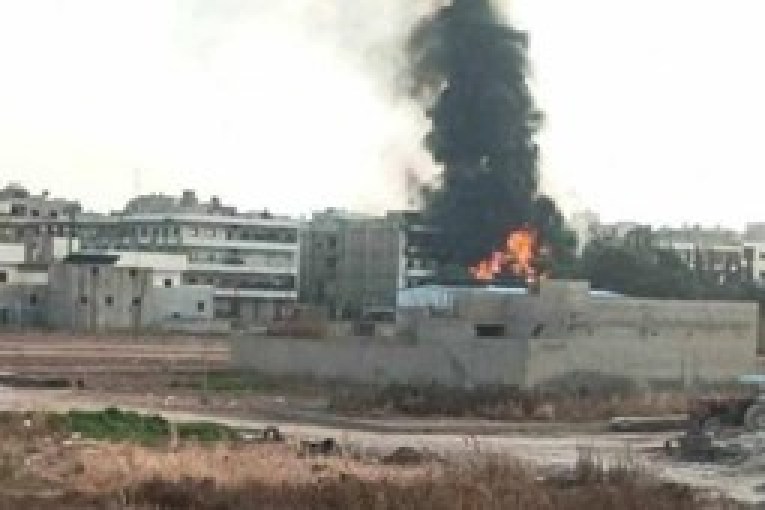
afrinpost-Exclusive
The Turkish-allied “Al-Hamza Division” militia announced via Telegram that its engineering wing is developing a drone with a range of 20 km, capable of carrying up to 200 kg of ammunition.
Activist networks in Afrin reported that the “Hayat Tahrir al-Sham” organization has relocated a suicide drone manufacturing facility to areas under the control of the “Hamza Division” militia in the Sherawa district.
This development follows significant operations by the Afrin Liberation Forces in Sherawa villages, notably the operation on January 30, 2024. Meanwhile, Russian airstrikes continue to target various locations in Idlib, as Moscow aims to weaken the military power of Hayat Tahrir al-Sham, while Ankara seeks to leverage the situation for negotiation with Moscow, potentially involving Idlib in exchange for concessions in occupied Afrin.
Media reports suggest that Hayat Tahrir al-Sham has been manufacturing drones, with North Press Agency revealing the existence of a facility in the village of Ain al-Baida in the countryside of Latakia. The facility, formerly a school, has been converted for drone production.
According to sources, the aircraft engineers are predominantly Uighur fighters from the Islamic Party of Turkestan, who migrated with their families from China in 2013 and settled in the coastal mountains and western countryside of Idlib. These engineers design and oversee the manufacturing process, earning monthly salaries exceeding $4000. The workforce also includes Syrians from the region, many of whom joined various extremist factions, a third of whom are former ISIS members, supervising under Uighur experts.
On November 5, 2023, Interfax reported that a Russian airstrike targeted a drone warehouse in Jiftalk- Al-Shughur area of Idlib province.
On November 24, 2021, Sputnik Agency reported that Hayat Tahrir al-Sham managed to acquire over 500 medium-sized drones through a local intermediary, smuggled into the province via the Turkish border in cooperation with influential Turkish traders.
Furthermore, Spotnik stated that Hayat Tahrir al-Sham stored these drones in the city of Jisr al-Shughur, west of Idlib, near one of the main headquarters of the Islamic Party of Turkestan terrorist organization, adjacent to Jisr al-Shughur Hospital. Chinese experts from the Turkestan Party are modifying these drones, replacing the metal and plastic structure with carbon fiber to make them radar-evading. This modification includes connecting a group of drones to an automatic navigation system after pre-determining the target and equipping these drones with small, highly explosive bombs or missiles.
The deployment of suicide drones from areas under Hayat Tahrir al-Sham’s control in Idlib to target civilian and military objectives sends a message to all parties involved in the Syrian conflict. While these drones may not be highly advanced, their use raises concerns for Moscow, Damascus, and Tehran regarding the development of defense systems. It also raises questions about how Hayat Tahrir al-Sham acquired these drones and the possibility of dedicated manufacturing facilities in Idlib.
Earlier this month, Farhad Shami, spokesman for the Kurdish-led Syrian Democratic Forces (SDF), revealed for the first time the presence of the “Caucasus Battalion” and the “Imam al-Bukhari Group” in Afrin, formed by ISIS terrorist leaders who fled Mosul and Deir ez-Zor.
Shami emphasized that these terrorist organizations are among the most dangerous extremist groups and operate according to the instructions and orders of Turkish intelligence.
The terrorist groups recently clashed with the Afrin Liberation Forces near the village of Basliyah/Baslahaiya.
Despite their significant risks, drone manufacturing costs pale in comparison to human losses. Drones are easy to use and do not require dedicated runways or extensive maintenance. Today, they constitute the backbone of the Turkish forces. Drone manufacturing technology has made its way to Syria from Turkey and Iran, with China being a source of components and basic aircraft converted for military purposes in specialized workshops.
It is worth noting that the first use of drones occurred on October 4, 2013, by ISIS, targeting sites near the Asia Pharmaceutical Industries factory in northern Aleppo countryside.






